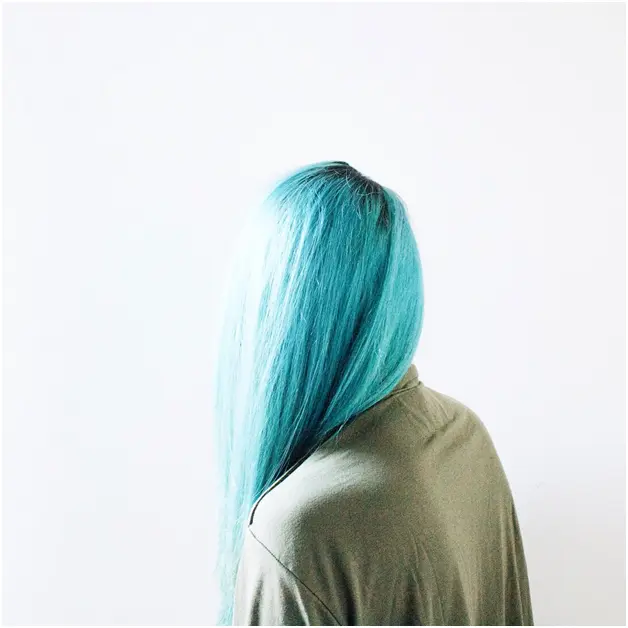Urgent Lice Removal - Blog - Complete guide to Lice Treatment
May 24, 2023
Battling the Buzz: Head Lice Outbreak in Coral Gables, Florida Keeps Kids Away from School

Battling the Buzz: Head Lice Outbreak in Coral Gables, Florida Keeps Kids Away from School
Title: Battling the Buzz: Head Lice Outbreak in Coral Gables, Florida Keeps Kids Away from School
Introduction:
In the quiet community of Coral Gables, Florida, an unexpected visitor has caused quite a stir among parents, students, and school officials alike. A recent outbreak of head lice has emerged, causing numerous absences and creating a challenging situation for schools in the area. This unwelcome infestation has disrupted the normal routine, raising concerns about hygiene, prevention, and the need for a swift resolution. In this blog post, we delve into the details of this head lice outbreak and explore the necessary steps to tackle this nuisance effectively.
Understanding Head Lice:
Head lice, scientifically known as Pediculus humanus capitis, are tiny parasitic insects that reside on the human scalp and feed on blood. They spread primarily through direct head-to-head contact or by sharing personal items such as hats, combs, brushes, or headphones. Contrary to common misconceptions, head lice are not indicative of poor hygiene and can affect anyone regardless of cleanliness.
The Outbreak in Coral Gables:
Coral Gables, known for its vibrant community and excellent schools, has recently faced an uptick in head lice cases. The close-knit nature of schools and extracurricular activities has facilitated the rapid spread of these pesky bugs among students. As a result, parents and school administrators are grappling with the challenge of controlling the outbreak while ensuring the well-being of their children.
Implications for Schools and Students:
The head lice outbreak in Coral Gables has had significant implications for schools and students. Firstly, there has been an alarming increase in student absences due to infestations. Parents, concerned about the contagious nature of head lice, have kept their children at home to prevent further spreading. Consequently, schools are facing an attendance crisis, impacting both academic progress and social development.
Furthermore, the stigma associated with head lice has led to embarrassment and discomfort among students affected by the infestation. This social and emotional impact is an additional concern that schools and parents must address delicately to maintain a positive learning environment.
Prevention and Control Measures:
To combat the head lice outbreak effectively, it is essential to implement a comprehensive prevention and control strategy. Here are some key measures that can help:
1. Education and Awareness: Schools should organize informational sessions and distribute educational material to parents and students. Raising awareness about head lice, their prevention, and treatment is crucial for curbing the infestation.
2. Regular Head Checks: Implementing routine head checks within schools can help identify infestations early on. Trained personnel can conduct thorough inspections, focusing on areas like the nape of the neck and behind the ears.
3. Collaboration with Parents: Parental involvement is vital in combating head lice outbreaks. Schools should maintain open communication channels to inform parents about the situation and provide guidance on prevention, detection, and treatment methods.
4. Rigorous Cleaning and Sanitization: Encourage parents to wash and dry clothing, bedding, and personal items on a high-heat setting. Vacuuming upholstered furniture and car seats can also help eliminate lice or their eggs.
5. Treatment and Follow-up: Prompt treatment with over-the-counter or prescription lice-killing products is essential. After treatment, students should be allowed to return to school provided they are lice-free and have completed the recommended follow-up regimen.
Conclusion:
The head lice outbreak in Coral Gables, Florida, has presented a challenging situation for schools and families, disrupting daily routines and causing distress among students. However, by implementing effective prevention and control measures, such outbreaks can be brought under control. Through collaboration between schools, parents, and students, the community can work together to eliminate head
Visit us at Urgentliceremoval for a speedy elimination of every single louse and nit on your head. Only Lice Removal company offering Free Lice Screenings. Give us a call at 1-(800) 676-7021. We are always available to provide hands-on assistance!
April 28, 2023
Why Shaving Your Head Won’t Get Rid Of Lice

Why Shaving Your Head Won’t Get Rid Of Lice
April 28, 2023
The myth of shaving your head to get rid of lice
It is a common misconception that shaving your head is an effective method of eliminating head lice. While it can remove live lice present on the scalp, it does not address the issue of nits or eggs attached to the hair shafts.
Head lice have a life cycle consisting of three stages: nit, nymph, and adult. Adult lice lay eggs, or nits, on the hair shafts close to the scalp. Nits are oval-shaped and tightly attached to the hair with a glue-like substance produced by the lice. After approximately one week, the nits hatch into nymphs, which are juvenile lice. The nymphs eventually develop into adult lice, and the cycle repeats.
While shaving the head may remove live adult lice and nymphs, the nits will remain. Nits can survive for up to two weeks and will eventually hatch into nymphs and adult lice, restarting the cycle. It is also important to note that lice can be found on other parts of the body, such as the eyebrows and eyelashes, so shaving the head would not address those infestations.
To effectively treat head lice, it is essential to use methods that target both live lice and nits. These include over-the-counter or prescription shampoos and lotions that kill the lice and their eggs, as well as combing techniques with a fine-toothed comb to physically remove the nits from the hair shafts. Proper hygiene practices, such as washing bedding and clothing in hot water, are also crucial in preventing the spread of lice. Seeking professional guidance for treating head lice infestations is highly recommended to ensure proper treatment and prevent future outbreaks.
Treatment options for head lice
Head lice infestations are common and can be a nuisance to deal with. Fortunately, there are effective treatment options available. Over-the-counter and prescription medications, such as shampoos and lotions, can be used to kill lice and their eggs. In addition, combing techniques, such as using a fine-toothed comb, can be effective in removing lice and nits from the hair.
It is important to note that proper hygiene practices are crucial in preventing the spread of lice. This includes washing bedding and clothing in hot water, avoiding sharing personal items like hats and combs, and thoroughly cleaning and vacuuming areas where infested individuals spend time. Seek professional guidance to ensure proper treatment and prevent future outbreaks.
Consequences of shaving your head to get rid of lice
Shaving one’s head to get rid of lice is a common misconception that can lead to unintended consequences. While it may seem like a quick and easy solution, it can have physical and psychological effects on a person. Shaving can cause scalp irritation and leave the scalp vulnerable to sunburn and infections. Additionally, it may also result in social anxiety and low self-esteem. Shaving is not a practical or effective solution, as lice can still live on other parts of the body and in the environment. Effective treatment options, such as over-the-counter and prescription medications, combing techniques, and proper hygiene practices, should be explored instead.
Conclusion
In conclusion, while the myth of shaving one’s head to get rid of lice may seem like a quick and easy solution, it is not an effective one. Understanding the life cycle of head lice, common treatment options, and the potential consequences of shaving one’s head highlights the importance of seeking professional guidance for effective treatment and prevention of head lice infestations. Proper hygiene practices, such as washing bedding and clothing in hot water, and regular combing techniques for removing lice and nits are also crucial in preventing the spread of lice. Remember, prevention is key, and seeking professional guidance can ensure proper treatment and prevent future outbreaks.
Visit us at Urgentliceremoval for a speedy elimination of every single louse and nit on your head. Only Lice Removal company offering Free Lice Screenings. Give us a call at 1-(800) 676-7021. We are always available to provide hands-on assistance!
April 21, 2023
What Do Lice Look Like?

What Do Lice Look Like?
April 21, 2023
What Are Nits?
Nits are the minuscule, oval-shaped spawn that head lice leave on the hair shafts. These bloodsucking parasites thrive on human scalps and secrete a sticky substance that attaches the nits close to the scalp, making them difficult to detect.
These nits are usually the size of a pinhead and appear yellowish-white. More
April 14, 2023
Does Dyeing Your Hair Kill Head Lice?

Does Dyeing Your Hair Kill Head Lice?
April 14, 2023
Head Lice: Understanding the Basics
Head lice are small parasites that feed on blood and usually infest the scalp, neck, and behind the ears. They can easily spread from person to person through close contact or sharing personal items like combs, hats, or clothing. Common symptoms of infestation include intense itching, visible nits, and small red bumps on the scalp or neck. More
April 17, 2018
Don’t Make These Mistakes When Seeking Head Lice Treatments

Don’t Make These Mistakes When Seeking Head Lice Treatments
April 17, 2018
There’s a saying that if you haven’t made a mistake, you haven’t tried anything new.
That’s true, but to a certain extent.
When mistakes are costly, that’s when you know you can’t afford to make them in the first place. This is especially true when it comes to head lice.
If you keep making mistakes, not only will the problem worsen, you’ll end up losing your hair! More

